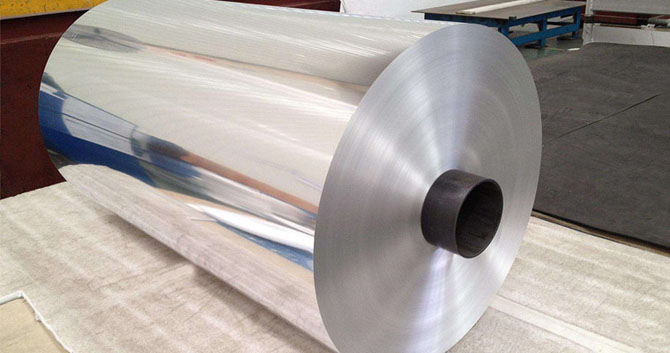At present, air conditioning is gradually developing towards the direction of miniaturization, high efficiency and long life. The heat exchanger of air conditioning is also developing towards ultra-thin and high strength. In the 1980s, the thickness of heat exchanger was 0.15-0.2 ram, whereas today’s thickness is only between 0.09 and 0.15 mm. In order to improve the life of air conditioning, reduce power consumption, improve ventilation quality and improve refrigeration effect, a variety of functional hot plates have been produced. Aluminum foil for air conditioning can be divided into 7 categories according to its processing technology and performance characteristics.

1. Non-coated aluminium foil
Non-coated aluminium foil refers to the aluminium foil which has been rolled and annealed and whose surface has not been treated in any form.
2. Coated aluminium foil
Coated aluminium foil is the surface reprocessing of uncoated aluminium foil to make it have some special functions.
3. Corrosion Resistant Aluminum Foil
The surface of corrosion-resistant aluminium foil product has a certain corrosion-resistant protective layer. The air-conditioning heat exchanger sheet made of this product can be used in harsh areas, and can significantly improve the service life of air-conditioning. At the same time, due to the improvement of corrosion resistance of heat exchanger, the formation of corrosive powder on the surface is greatly reduced, thus improving the ventilation quality and purifying the air in the air conditioning room.
4. Hydrophilic Aluminum Foil
The surface of hydrophilic aluminum foil has strong hydrophilicity. The hydrophilicity is determined by the angle formed when water is adhering to the surface of aluminium foil. The smaller the angle a, the better the hydrophilicity, and vice versa, the worse the hydrophilicity. Generally speaking, angle a is less than 35. It belongs to hydrophilic property. Hydrophilic aluminium foil is commonly used in air conditioning condensers. Its main function is to make the moisture in hot air condensate into droplets on the heat exchanger sheet, which is easy to spread out and flow downward along the sheet. In this way, the effect of ventilation of heat exchanger is avoided because of the “bridging” of water droplets between heat exchangers, so as to improve the heat exchange rate of air conditioning and save electricity under the condition of the same refrigeration capacity. At present, the general hydrophilic aluminum foil on the market not only has good hydrophilicity on the surface, but also has high corrosion resistance, which makes the performance of air conditioning more optimized.
5. Hydrophobic Aluminum Foil
Hydrophobic aluminium foil is also called water repellent aluminium foil. Its surface properties are just the opposite to those of hydrophilic aluminium foil. That is to say, when condensate condenses to the surface of the aluminum foil, the contact angle between the condensate and the aluminum foil is larger, generally at 75. Above. The bigger the angle, the better the water repellency. The ultimate purpose of using hydrophobic aluminium foil is the same as hydrophilic aluminium foil, that is, to keep condensate between heat exchangers. The difference is that hydrophobic aluminium foil can remove the condensate between heat exchangers by increasing the contact angle between condensate and heat exchanger to form water droplets which are easy to slip.
6. Self-lubricating aluminium foil
In the process of manufacturing air-conditioning heat exchanger, lubricant should be added on its surface first, then punched and flanged, and then washed off with trichloroethylene. Because trichloroethylene is harmful to human body, in order to reduce this process, self-lubricating aluminium foil is produced accordingly. Self-lubricating aluminium foil, as its name implies, does not need to be lubricated separately in its punching process. The lubrication of self-lubricating aluminium foil during punching is assumed by the pre-treated film on the surface of aluminium foil. Since no special lubricant is required, subsequent cleaning and drying processes of trichloroethylene are omitted.
7. Anti-mildew Aluminum Foil
Anti-mildew aluminium foil is mainly used in the air-conditioning part of the indoor machine. Its main function is to prevent the surface of heat exchanger from mildewing due to its long use or placement time, thus significantly improving the air quality of air-conditioning, preventing abnormal odor and effectively improving the indoor environment of air-conditioning.



